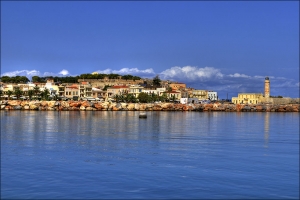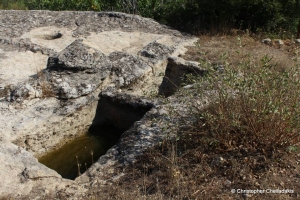The Venetian Harbor of Rethymnon, next to the modern harbor of the city, with the Egyptian lighthouse is one of the most picturesque areas of the old town. It operated in the Byzantine period (after 961), but flourished during the Venetian period. The Venetians in the 14th century started major projects to facing the problem of siltation, which holds till today.
Some meters away from the village Prinias, province Malevizi, at the area called Patitiria a very pleasant surprise awaits us. This area is scattered with medieval wine presses, all carved into the soft limestone of the region. The presses are evidence of ancient winemaking traditions of the region from ancient times until today with wines famous all over the known world. The grounds and the altitude of this region are considered ideal for growing wine grape varieties. The area with the carved presses is within walking distance from the archaeological site of Patela, where ancient city Rizinia is found.
















































































